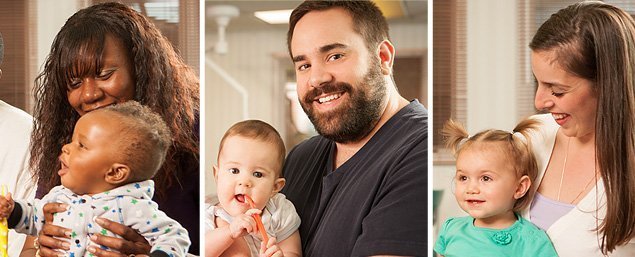





This blog posting is excerpted from the National Center on Health's Brush Up on Oral Health monthly e-newsletter.
What young children hear about the dentist affects their idea of what upcoming visits will be like. When children hear others talk negatively of the dentist, they may feel afraid of visiting the dentist or dental hygienist. Here are some tips to make sure your child has a happy first dental visit:
Strategies for Parents to Prepare Children for Dental Visits
Keep it short and simple. Sharing too much information about dental visits may confuse and worry children. If children ask what will happen during the visit, dentists and dental hygienists recommend using short, simple explanations. For example, say, “the dental hygienist will count how many teeth you have.”
Focus on the positive. Visiting the dentist or dental hygienist is easy and painless for most children. Usually, visits don’t take long. If children ask about what will happen during a visit, talk about positive things. For example, you can say, “The dentist will see what a good job you do to take care of your teeth!” or, “When you leave the dental office, your teeth will be shiny and bright!”
Keep your fears to yourself. If you dislike dental visits, don’t share those feelings with your children. Hearing about adults’ fear can make children feel afraid of visiting the dentist or dental hygienist too.
Don’t bring up possible pain. Dentists and dental hygienists know how to keep sharp tools out of children’s sight. But many children worry about getting shots or having their teeth drilled during a dental visit. If the child asks if he or she is going to get a shot, you might say, “I don’t know, but we can ask the dentist or dental hygienist.”
Role-play visiting the dentist and dental hygienist. Have your children dress up and role-play that they are dentists or dental hygienists. Children can use white shirts as lab coats, paper napkins as patient bibs, and coffee filters and yarn as masks. Let them pretend to examine and count your teeth.
Read books or watch videos together. Use age-appropriate books and videos about visiting the dental office. Ask a children’s librarian, dentist, dental hygienist, or early childhood education expert for one or two good books and videos about visiting the dental office.
The Sesame Workshop’s Healthy Teeth, Healthy Me has many materials in English and Spanish that can help prepare children for a dental visit in a positive way. The PBS Parents web page Talking with Kids about Health: Going to the Doctor & Dentist has good tips in English and Spanish on what to say to children before and during a dental visit.
Make dental visits fun. Encourage your child to bring a favorite stuffed animal or blanket to the dental visit. Also, plan a fun activity to look forward to after the visit.
National Center on Health Brush Up on Oral Health Newsletter Staff
Katrina Holt: kholt@georgetown.edu • (202) 784-9551
Sarah Kolo: sk22@georgetown.edu • (202) 784-9553
Beth Lowe: eal38@georgetown.edu • (202) 687-1864
The National Center on Health encourages you to subscribe to the newsletter and welcomes your feedback on this issue and suggestions for topics for future issues. Please forward your comments to nchinfo@aap.org or call (888) 227-5125.
Read all issues of Brush Up on Oral Health at Early Childhood Learning & Knowledge Center.
This newsletter was prepared under contract #9OHC0005 for the U.S. Department of Health and Human Services, Administration for Children and Families, Office of Head Start, by the National Center on Health. This publication is in the public domain, and no copyright can be claimed by persons or organizations.
